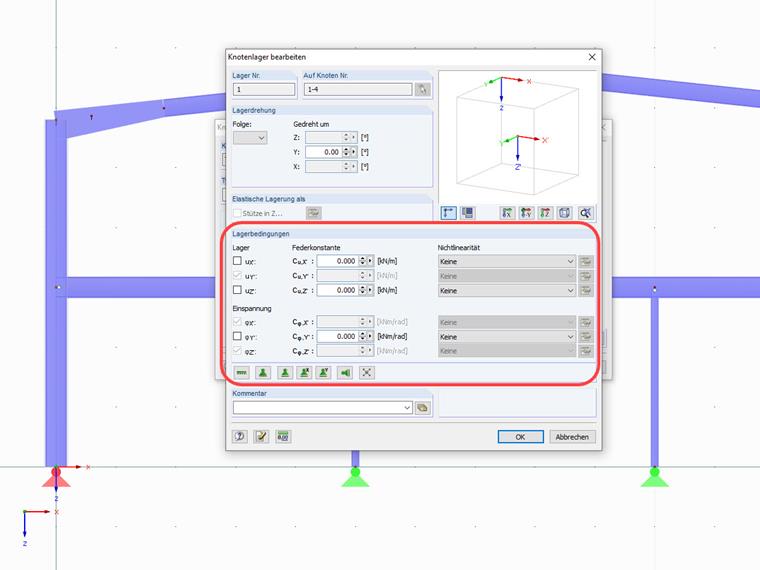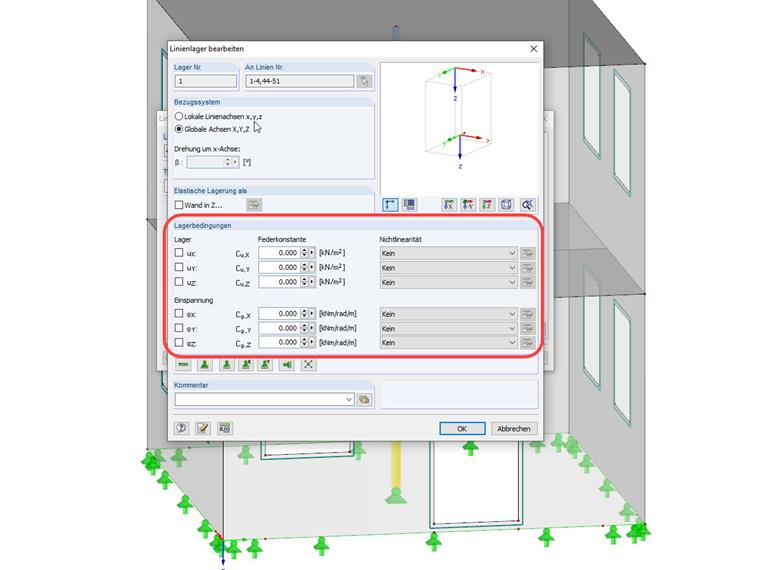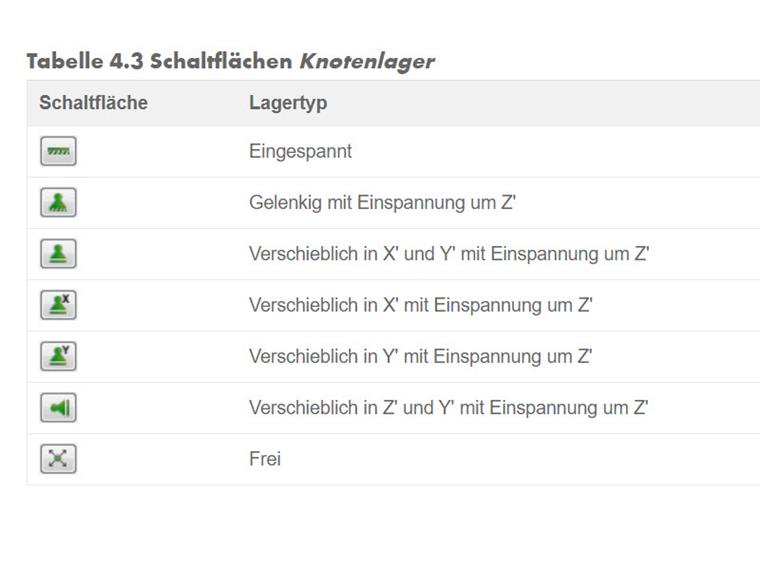The degrees of freedom can be used to describe displacements and rotations at a nodal point. Thus, each degree of freedom allows for a displacement or a rotation in a certain direction. In an FEA calculation, the degrees of freedom are also unknown quantities in the nodal points that have to be determined in order to solve the equation system.
Support
Each structure transfers the forces of it from top to bottom into the foundations. The foundations are idealized as supports in structural engineering. They are to be understood as degrees of freedom, and thus form the boundary conditions for a structure. That is to say, they prevent the displacement or rotation in a certain direction, so that no deformation can occur. Depending on the definition, supports can restrict certain degrees of freedom.
Degrees of Freedom for 3D and 2D Calculations
- A planar structure (2D) has three possibilities of movement (degrees of freedom). Two displacements in the horizontal X-direction and in the vertical Z-direction as well as one rotation about the global Y-axis. The unavailable degrees of freedom cannot be selected in the software or are grayed-out.
- A spatial structure (3D), on the other hand, has six possibilities of movement. Three displacements and three rotations, each in the X-, Y- and Z-direction.
Supports in RFEM and RSTAB
Supports are used to transfer loads applied to a structural system into the foundations. Without any supports, all nodes would be free and could be displaced or rotated freely. If you want a node to act as a support, at least one of its degrees of freedom must be restricted by a spring or blocked. Furthermore, the node must be a part of a surface or a member. It is also necessary to consider the boundary conditions of members in order to exclude double releases on the supported nodes.
Nodal supports are required in order to apply imposed deformations.
It is possible to provide nodal supports with nonlinear properties (failure criteria for tensile or compressive forces, working and stiffness diagrams).
The New Nodal Support dialog box provides buttons for different support types, making the definition of degrees of freedom easier. They have the following support properties:













.png?mw=600&hash=49b6a289915d28aa461360f7308b092631b1446e)

















